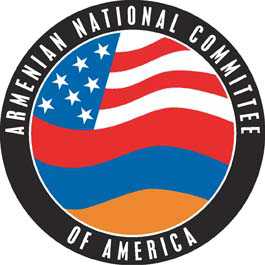
ARMENIAN GENOCIDE RESOLUTION
http://www.youtube.com/watch?v=7g7gQBeWuY8
1711 N Street, NW
Washington, DC 20036
Tel. (202) 775-1918
Fax. (202) 775-5648
Email. [email protected]
Internet www.anca.org
“The great Turk is governing in peace twenty nations from different religions. Turks have taught to Christians how to be moderate in peace and gentle in victory.”Voltaire’s Philosophical Dictionary
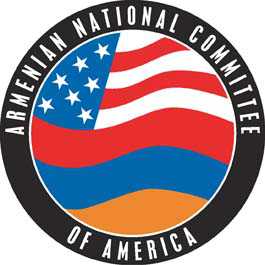

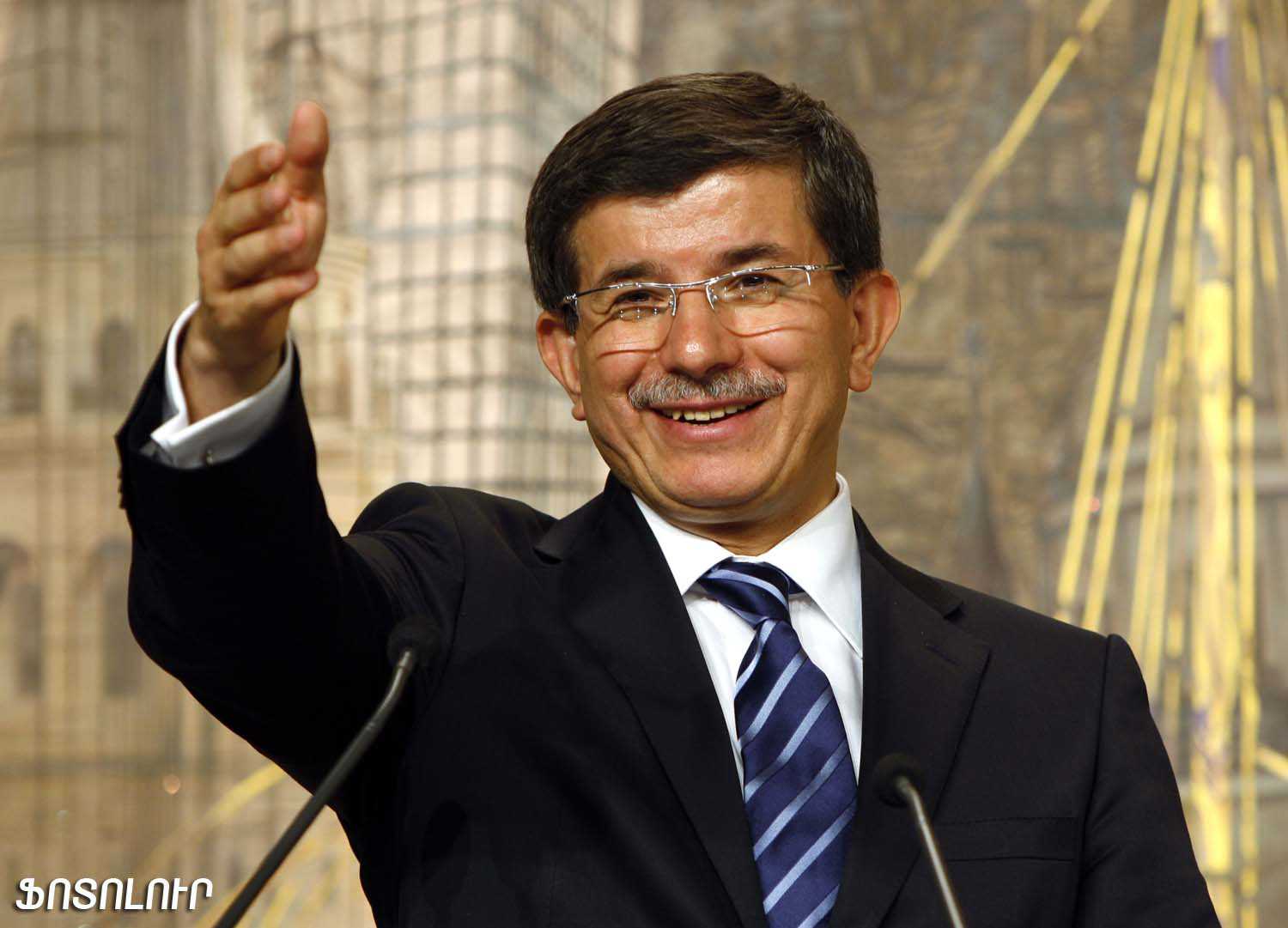
 ANKARA (Combined Sources)—Turkish Foreign Minister Ahmet Davutoglu will travel to Baku on Thursday for a ministerial meeting of the Black Sea Economic Cooperation (BSEC) where he will also address what Turkish media is describing as growing concerns by Azerbaijan over Turkey’s push to normalize ties with Armenia, the Turkish Hurriyet Daily reported.
ANKARA (Combined Sources)—Turkish Foreign Minister Ahmet Davutoglu will travel to Baku on Thursday for a ministerial meeting of the Black Sea Economic Cooperation (BSEC) where he will also address what Turkish media is describing as growing concerns by Azerbaijan over Turkey’s push to normalize ties with Armenia, the Turkish Hurriyet Daily reported.
Davutoglu is expected to meet with his counterpart Elmar Mammadyarov and President Ilham Aliyev on the sidelines of the meeting, Hurriyet said.
The meeting will come a week after Aliyev threatened to derail the Western Backed Nabucco pipeline project to bring gas from the Caspian Sea to Europe via Turkey.
Media reports in recent weeks have said the historically strong Turkish-Azeri alliance is in danger of breaking down due to Baku’s uncompromising demands for the Karabakh conflict to be linked to Turkish-Armenian rapprochement.
Although Aliyev presented his threat as a purely commercial move, analysts believe the underlying motive was to send a signal on the Turkish-Armenian deal.
Baku’s outbursts have been seen as a tactic to force the Karabakh linkage on Armenia, which is already under heavy international pressure to quickly normalize its relations with Turkey and resolve the Karabakh conflict.
“The timing of Aliyev’s announcement, less than a week after the accord between Yerevan and Ankara was signed, left little doubt.” Said Brian Whitmore, a senior correspondent at RFE/RL. “Baku had argued strenuously that a deal to reestablish relations between Ankara and Yerevan should not be signed while Armenia continued to occupy Nagorno-Karabakh, and it threatened to take unspecified countermeasures if one was.”
Turkish President Abdullah Gul, meanwhile, phoned his Azeri counterpart, Ilham Aliyev on Wednesday to brief him on discussions with US President Barack Obama and Dmitri Medvedev on the Karabakh conflict, the Anatolian News Agency reported.
The two leaders also discussed the recent removal of Turkish flags from a diplomatic mission in Azerbaijan a monument for Turkish soldiers who fought for Azerbaijan in the early 20th century. The move, a breach of international agreements between Azerbaijan and Turkey, was officially protested by Turkey’s ambassador to Azerbaijan.
Diplomatic sources have said Turkey and Azerbaijan are confident that the two countries will overcome “this period of strain” and will continue their cooperation for providing regional stability.
According to the Anatolian, Gul and Aliyev agreed that “misunderstandings and misperceptions brought about by some emotional reactions” while the two countries “were passing through hard times have been cleared.” It added that the two leaders “confirmed that impressions that ties between Turkey and Azerbaijan had weakened were not good for both countries.”
The Turkish flag was removed after Azeri flags were banned by FIFA at the Turkey-Armenia World Cup qualifying match soccer match in Bursa on October 14. The Turkish flags were replaced Tuesday, Azeri media reported, speculating that the decision to remove the flags came in response to a “Turkish ban” on Azeri flags in Bursa.
Asbarez
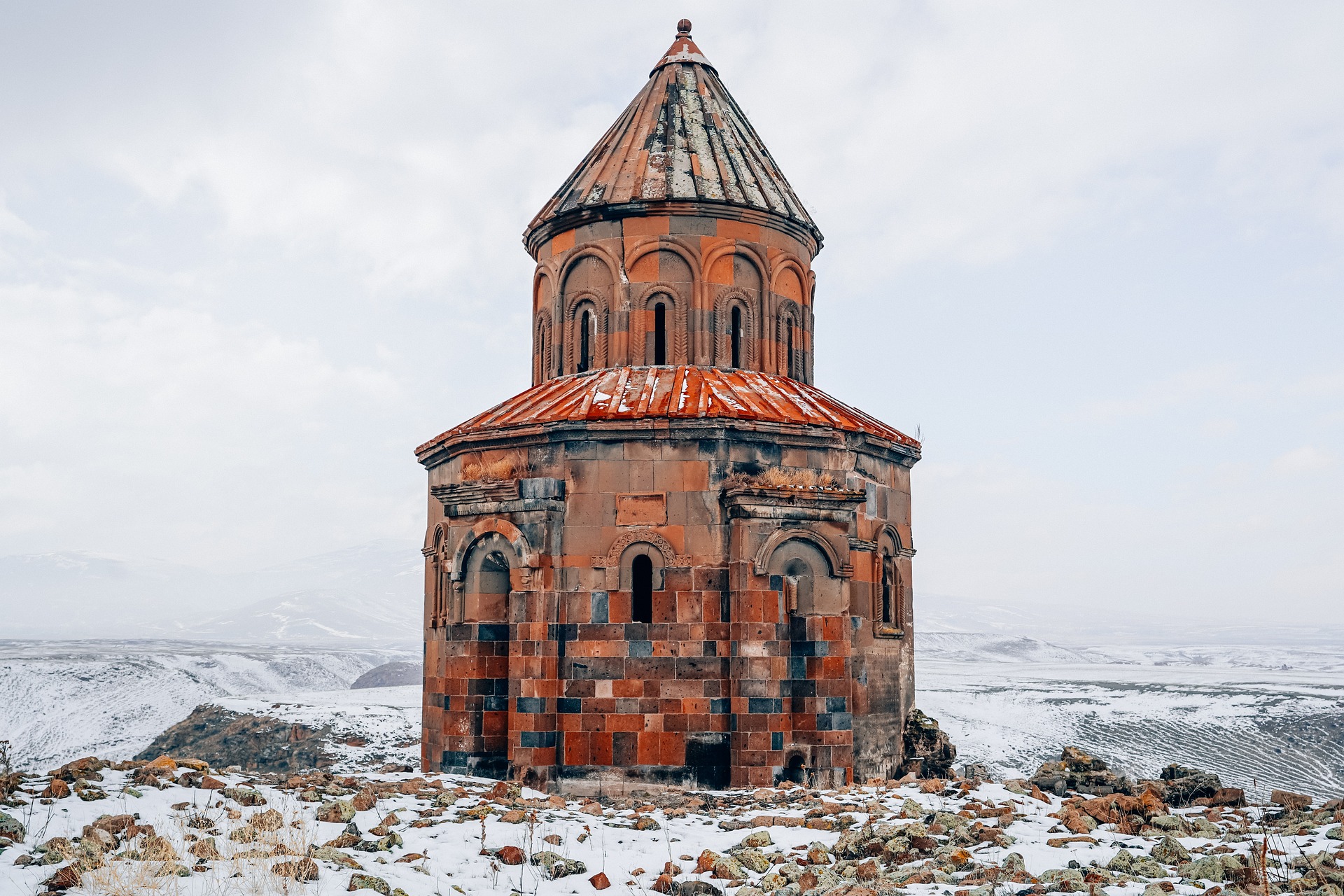
“We want to warn everyone – from the authorities to the local criminal leaders – that we will not give up our struggle for national dignity,” Alek Yenigomshyan, member of the Armenian Secret Army for the Liberation of Armenia (ASALA) and of the Miatsum (Unity) initiative, told reporters.
The statement was intended for those putting obstacles to the signature-gathering campaign against the Armenian-Turkish protocols and Madrid Principles.
The Miatsum initiative member Armen Yeghyan said that the incident in the Nor-Nork community of Yerevan clearly demonstrated policemen’s “collaboration” with the local criminal elements.
The film director Tigran Khzmalyan pointed out that Armenia’s special services are obviously persecuting “active citizens,” including students and Karabakh war veterans. In behalf of the Committee in Defense of Political Prisoners and Victims of Political Repressions, Khzmalyan stressed that all those subjected to repressions for pronouncing against the Armenian-Turkish protocols will be declared political prisoners.
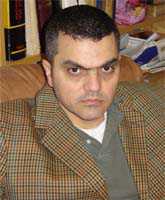

By Michael Hamlin Jr. | October 14, 2009, Brianna Campbell / The Collegian –
Ara Sarafian, an archival historian who specializes in late Ottoman history, presented information to California State University, Fresno students Monday night about the Adana massacre of Armenian’s in the Ottoman Empire. . .
The year 2009 marks the 100 year anniversary of the state led massacre that killed at least 20,000 Armenians in 1909. The massacre was entrenched in political, economical and religious differences.
In his presentation entitled ‘Remembering Adana’, Sarafian illustrated the destruction the massacre caused through the use of vivid pictures and hauntingly descriptive text that described the devastation and tragedy that occurred in Adana.
“The massacre was completely out of the blue,” Sarafian said during his presentation. “The devastation is breathtaking; the pictures bring the damage to life. I like to show them because if I did not, you would think I was lying or telling a story.”
Fresno State student and audience member Lauren Beal believes Fresno State students can learn many things from Sarafian’s presentation.
“Students can learn a lot about Armenian history,” Beal said. “If you can learn from history, it most likely will not be repeated.”
Barlow Der Mugrdechian, director for the center for Armenian studies, agrees that history can teach many things.
“History tells us a lot about ourselves,” Mugrdechian said after Sarafian’s lecture had concluded. “It [history] can happen again, we have to be careful of that fact and learn from our past mistakes.”
The Turkish government disputes the history of the events in Adana in 1909. The government contends that the Adana Massacre was an Armenian attack on the Muslim majority.
Sarafian addressed this issue while speaking about the importance of writing the correct history of the past. He said there is no place for lies or inaccuracies.
“The Turkish government said the Armenians were rebels [speaking about the Adana massacre of 1909]. That is a flat-out lie,” said Sarafian, founding director of the Gomidas Institute in London, a leading research center which republishes English translations of Armenian texts about the Armenian Genocide. “Historical writing is up to you. History does not write itself, states do not write history, people do.”
As well as speaking about the Adana massacre, Sarafian also had a message for Fresno State students.
“Students should have awareness for prejudice,” Sarafian said. “We are the guardians of our own freedom. We need to take a moral stance. Maybe the real question we should ask is how to stop the violence.”
On Oct. 10, the countries of Turkey and Armenia signed an agreement to establish diplomatic relations and open their border after one century of hostility towards each other. The issue of whether or not the killings of Armenians during the end of the Ottoman Empire is only hinted at, but none the less, the peace treaty was still signed.
Sarafian also put a positive perspective on the tragic massacre of 1909.
“History doesn’t always have to be negative, it can bring people together,” Sarafian said. “The legacy of Adana may not be to divide people, but to bring them together.”
Comments
Ergun KIRLIKOVALI:
Salahi Sonyel’s book “The Great War and the Tragedy of Anatolia”, TTK, Ankara, 2001, has an entire chapter on Adana; “Chapter 3: The Counter-Revolution” whose four sub-chapters are:
“The Events of 13 April 1909 (31 Mart Val’asi), pages 48-52
“The Adana Incidents”, pages 52-60
“Who was responsible for the Adana Incidents”, pages 61-64
“The Commission of Inquiry into the Adana Incidents”, pages 65-70.
All of these findings squarely refute Sarafian’s claims. Here is one excerpt from page 66 where one of the most experienced American missionaries in Anatolia, Rev. Dr. Christie, gives an account to of the very origin of the Adana incident to the American diplomatic representative who, in turn, furnishes it to British ambassador in Istanbul (Lowther)
“… that the young Armenians of Adana were nearly all revolutionaries, that arms and ammunition were on sale for months, and that both sides had been laying in store of them. He also attributed a large share in the (Adana) events to the ‘evil counsels’ of the Armenian bishop, whom (Dr. Christie) described as ‘a very bad man’…”
These comments of Dr. Christie refute Sarafian’s claims and show that the idea of a revolutionary plot did in fact exist among many Armenians headed by their ‘evil’ bishop. The Armenians were well armed and supplied, motivated, even arrogant, and quite aggressive; attributes in stark contradiction with the Sarafian misrepresentation of innocent, unarmed Armenians.
There is much more in this book and elsewhere to clearly demonstrate to truth-seekers that one-sided accounts of historic controversies, such as that by Sarafian of Adana incidents, do not help promote scholarship, truth, peace, or closure.
Dr. Gwynne Dyer, a London-based independent journalist, may have put it best in1976 after all:
“… The deafening drumbeat of the propaganda, and the sheer lack of sophistication in argument which comes from preaching decade after decade to a convinced and emotionally committed audience, are the major handicaps of Armenian historiography of the Diaspora today…”Ergun.


Published October 21, 2009
THE FIRST great massacre of the 20th century happened in eastern Anatolia 94 years ago. Armenians all over the world insist that their ancestors who died in those events were the victims of a deliberate genocide, and that there can be no reconciliation with the Turks until they admit their guilt. But now the Armenians back home have made a deal.
On October 10, the Turkish and Armenian foreign ministers signed a accord in Zurich that reopens the border between the two countries, closed since 1993, and creates a joint historical commission to determine what actually happened in 1915. It is a triumph for reason and moderation, so the nationalists in both countries attacked it at once.
The most anguished protests came from the Armenian diaspora: eight million people living mainly in the United States, France, Russia, Iran and Lebanon. There are only three million people living in Armenia itself, and remittances from the diaspora are twice as large as the country’s entire budget, so the views of overseas Armenians matter.
Unfortunately, their views are quite different from those of the people who actually live in Armenia. For Armenians abroad, making the Turks admit that they planned and carried out a genocide is supremely important. Indeed, it has become a core part of their identity.
For most of those who are still in Armenia, getting the Turkish border re-opened is a higher priority. Their poverty and isolation are so great that a quarter of the population has emigrated since the border was closed sixteen years ago, and trade with their relatively rich neighbour to the west would help to staunch the flow.
Moreover, the agreement does not require Armenia to give back the Armenian-populated parts of Azerbaijan, its neighbour to the east. Armenia’s conquest of those lands in 1992-94 was why Turkey closed the border in the first place (many Turks see the Turkic-speaking Azeris as their “little brothers”), so in practical terms Armenian president Serge Sarkisian has got a very good deal.
The communities of the diaspora, however, believe the Armenian government has sold them out on the genocide issue. Their remittances are crucial to Armenia, so President Serge Sarkisian has spent the past weeks travelling the world, trying to calm their fury. In the end, he will probably succeed, if only because they have nowhere else to go.
But can any practical consideration justify abandoning the traditional Armenian demand that Turkey admit to a policy of genocide? Yes it can, because it is probably the wrong demand to be making.
Long ago, when I was a budding historian, I got sidetracked for a while by the controversy over the massacres of 1915. I read the archival reports on British and Russian negotiations with Armenian revolutionaries after the Ottoman empire entered the First World War on the other side in early 1915. I even read the documents in the Turkish General Staff archives ordering the deportation of the Armenian population from eastern Anatolia later that year. What happened is quite clear.
The British and the Russians planned to knock the Ottoman empire out of the war quickly by simultaneous invasions of eastern Anatolia, Russia from the north and Britain by landings on Turkey’s south coast. So they welcomed the approaches of Armenian nationalist groups and asked them to launch uprisings behind the Turkish lines to synchronise with the invasions. The usual half-promises about independence were made, and the Armenian groups fell for it.
The British later switched their attack to the Dardanelles in an attempt to grab Istanbul, but they never warned their Armenian allies that the south-coast invasion was off. The Russians did invade, but the Turks managed to stop them. The Armenian revolutionaries launched their uprisings as promised, and the Turks took a terrible vengeance on the whole community.
Istanbul ordered the Armenian minority to be removed from eastern Anatolia on the grounds that their presence behind the lines posed a danger to Turkish defences. Wealthy Armenians were allowed to travel south to Syria by train or ship, but for the impoverished masses it was columns marching over the mountains in the dead of winter. They faced rape and murder at the hands of their guards, there was little or no food, and many hundreds of thousands died.
If genocide just means killing a lot of people, then this certainly was one. If genocide means a policy that aims to exterminate a particular ethnic or religious group, then it wasn’t. Armenians who made it alive to Syria, then also part of the Ottoman empire, were not sent to death camps. Indeed, they became the ancestors of today’s huge Armenian diaspora. Armenians living elsewhere in the empire, notably in Istanbul, faced abuse but no mass killings.
It was a dreadful crime, and only recently has the public debate in Turkey even begun to acknowledge it. It was not a genocide if your standard of comparison is what happened to the European Jews, but diaspora Armenians will find it very hard to give up their claim that it was. Nevertheless, the grown-ups are now in charge both in Armenia and in Turkey, and amazing progress is being made.
n Gwynne Dyer is a London-based independent journalist whose articles are published in 45 countries.
=======================================================
Latest Articles :: Gallery :: Books :: Directory :: ContactComing Soon – Selected Book Chapters Podcasts Ideas1 Ideas2 Ideas3 TVO
|
||
|
© 2000-2009 all rights reserved |
.
|
|
GWYNNE DYER has worked as a freelance journalist, columnist, broadcaster and lecturer on international affairs for more than 20 years, but he was originally trained as an historian. Born in Newfoundland, he received degrees from Canadian, American and British universities, finishing with a Ph.D. in Military and Middle Eastern History from the University of London. He served in three navies and held academic appointments at the Royal Military Academy Sandhurst and Oxford University before launching his twice-weekly column on international affairs, which is published by over 175 papers in some 45 countries. His first television series, the 7-part documentary ‘War’, was aired in 45 countries in the mid-80s. One episode, ‘The Profession of Arms’, was nominated for an Academy Award. His more recent television work includes the 1994 series ‘The Human Race’, and ‘Protection Force’, a three-part series on peacekeepers in Bosnia, both of which won Gemini awards. His award-winning radio documentaries include ‘The Gorbachev Revolution’, a seven-part series based on Dyer’s experiences in Eastern Europe and the former Soviet Union in 1987-90, and ‘Millenium’, a six-hour series on the Dyer’s major study “War”, first published in the 1980s, was completely revised and re-published in 2004. During this decade he has also written a trio of more contemporary books dealing with the politics and strategy of the post-9/11 world: ‘Ignorant Armies’ (2003), ‘Future: Tense’ (2004), and ‘The Mess They Made’ (2006). The latter was also published as ‘After Iraq’ in the US and the UK and as ‘Nach Iraq und Afghanistan’ inGermany. His most recent projects are a book and a radio series called ‘Climate Wars’, dealing with the geopolitics of climate change. They have already been published and aired in some places, and will appear in most other major markets in the course of 2009. |
| =========================================================================
DYER, GWYNNE Canadian Journalist/Producer
|